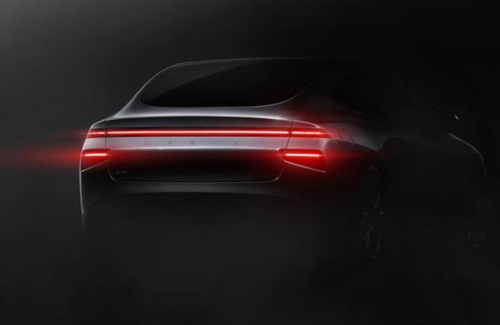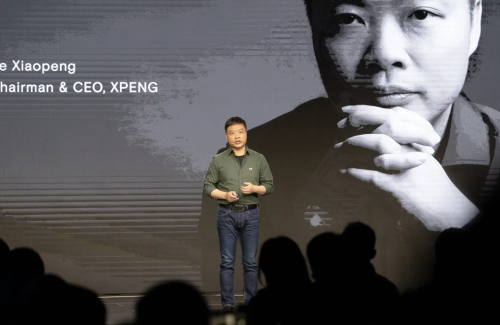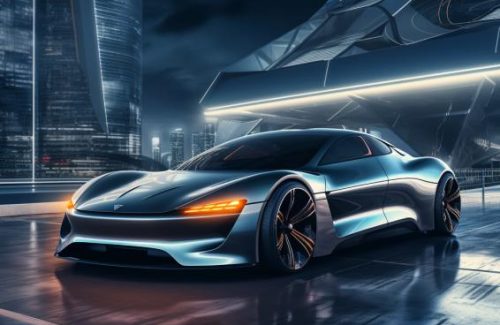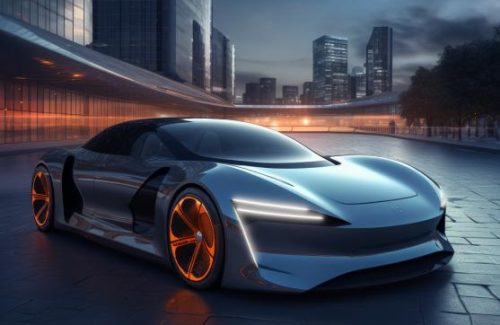Unit 5.5 Break even
X-PENG INVESTS AGAIN FOR NEW P7 MODEL



Xpeng, a leading Chinese car manufacturer, is gearing up for a groundbreaking venture with its latest model, the P7. CEO He Xiaopeng is strategically eyeing the fiercely competitive electric car market, aiming not only to provide a cost-competitive option but also to outshine Tesla with innovative features. Whilst the CEO believes that risk is a factor, he believes that the project will deliver profit and manage to hit the break-even quantity in the short term (under 2.5 years).
To support this ambitious endeavor, Xpeng invested heavily in a small, but state-of-the-art factory dedicated to producing the P7 model. The cost of this venture stands at a significant $120 million. He Xiaopeng is eager to employ break-even analysis, to determine the number of P7 units required to cover the factory costs.
With the P7 priced at an average of $33,000, Xpeng seeks a sweet spot where competitive pricing meets profitability. The break-even point calculation will be crucial in guiding pricing strategies and ensuring financial sustainability. As the P7 rolls out with advanced features aimed at outcompeting Tesla in the Chinese market, He Xiaopeng is banking on the break-even analysis to navigate the delicate balance between affordability and cutting-edge technology. Xpeng’s success in achieving this equilibrium will not only secure its position in the market but also set new standards for the future of electric cars in China.
The breakdown of costs will be: average selling price of $33,000 whereas the cost of $19,000 is the variable cost per P7 car. He Xiaopeng and his sales team have forecast demand at 2500 P7 models sold per month. He hopes to break even within 12 months of beginning production!
The target profit required to satisfy investors is considered to be about $100m. With this in mind, He Xiaopeng would like to investigate how many units need to be sold in order to achieve this target profit.
KEY TERMS FROM THE CASE
QUESTIONS FROM THE CASE STUDY
Questions:
- Calculate the contribution per vehicle [1]
- What is the break-even quantity at an average price of $33,000 [2]
- Calculate the total revenue at break-even quantity! [2]
- Calculate total costs at the break-even point! [2]
- Calculate the total profit after 12 months of trading [2]
- Calculate how many months it takes to break-even if sales are the projected 2500 models per month [2]
- Calculate how many units would have to be sold to achieve a target profit of $100m [2]
- Calculate how many units in excess of the BEP, if forecasted demand proves to be accurate after 12 months [2]
- Calculate the new break-even point if the costs of the factory rose to $140m
- Examine the strengths and weaknesses of using break even for a business-like X-peng [6]
- Construct a fully labelled break-even chat for X-peng with the data supplied above [5]
- Construct a fully labelled break-even chat for x-peng given the following changes: sales price drops to $27,000, construction goes over budget and factory costs rise to $160m and variable costs increase to $21,000 [5]
- Calculate the margin of safety (in units) based on the new changes if the anticipated demand remains at 2500 cars sold per month [2]
SUGGESTED ANSWERS TO 5.5 BREAK EVEN
Unit 5.5 Break even suggested answers
Questions:
1.) Calculate the contribution per vehicle [1]
$33,000 – $19000 = $14,000 contribution
2.) What is the break even quantity of cars at an average price of $33,000 [2]
$120,000,000 / $14000 (contribution) = 8571.4 (round up for a whole car to 8572)!
3.) Calculate the total revenue at break even quantity! [2]
8572 * $33,000 = $282,876,000
4.) Calculate total costs at the break even point! [2]
Fixed costs = $120m
Variable costs = 8572 * $19,000 = $162,868,000
Total costs = $282,868,000
NOTE: Technically, costs should equal revenue, but revenue is slightly higher as we rounded up to give a whole car instead of a fraction of a car!
5.) Calculate the total profit after 12 months of trading [2]
Forecasted sales = 12 * 2500 (cars per month) = 30,000 cars. BE occurs at 8572 cars.
So, 30,000 – 8572 = 21,428
21,428*14,000 = $299,992,000
6.) Calculate how many months it takes to break even if sales are the projected 2500 models per month [2]
Break even occurs in the 4th month, with 7500 sold in the first 3 months.
7.) Calculate how many units (cars) would have to be sold to achieve a target profit of $100m [2]
Target profit = fixed costs + target profit / contribution per unit (FC+TP/Contribution)
So, $120,000,000 + $100,000,000 / $14,000 = 15714.2 (round up to a full car) 15,715 cars
8.) Calculate how many units in excess of the BEP, if forecasted demand proves to be accurate after 12 months [2]
So, we’ve already done the calculations for this. Just need to select the right data.
Forecast sales = 12*2500 = 30,000 cars (1 year)
BOP = 8572
So, 30,000 – 8572 = 21,428 cars
9.) Calculate the new break even point if the costs of the factory rose to $140
BE = FC/Contribution
$120,000,000 / 14,000 units =10,000 cars (and increase of 1428 cars
10.) Examine the strengths and weaknesses of using break even for a business like X-peng [6]
BE has a number of assumptions.
Firstly, it assumes all costs are linear
Forecasted sales may not materialise
Contribution per unit may change. For example, TESLA is now engaging in a price war and as a result, XPeng are forced to lower prices! This will have a knock on effect on the break even point.
Secondly, it assumes costs are linear! If Xpeng can break the US market, it will sell more units (ceteris paribus) but, larger orders could potentially demand lower prices or discounts!
Thirdly, the assumption is that Xpeng can sell its production! In reality, some unsold stock is likely which requires further discounts to shift it!
Inflation may also increase material prices which means that Xpeng must either absorb the increased costs (which increases the BOP) or raise prices which in turn, may reduce sales figures!
Likewise, other exogenous unpredictable events, like supply chain problems or trade wars (tariffs, quotas, embargoes etc) may threaten sales in other countries.
Moreover, sales of Xpeng are in part determines by the success or failure of other brands! What if another EV manufacturer like Link explodes on the scene, creating super popular and sensibly priced alternatives?
Lastly, break even may be inappropriate if the factory starts to produce other cars (models) on the same line. It then becomes harder to use the tools, as fixed costs are new shared between two or more models!
With these points in mind, it might be more useful to make a range of BE simulations asking, ‘what if’ questions and take a low range, a medium range and a higher range! This might be more appropriate as you can then engage in a discussion about the likelihood of growth or recession and to what extent these factors may affect the BE predictions!




